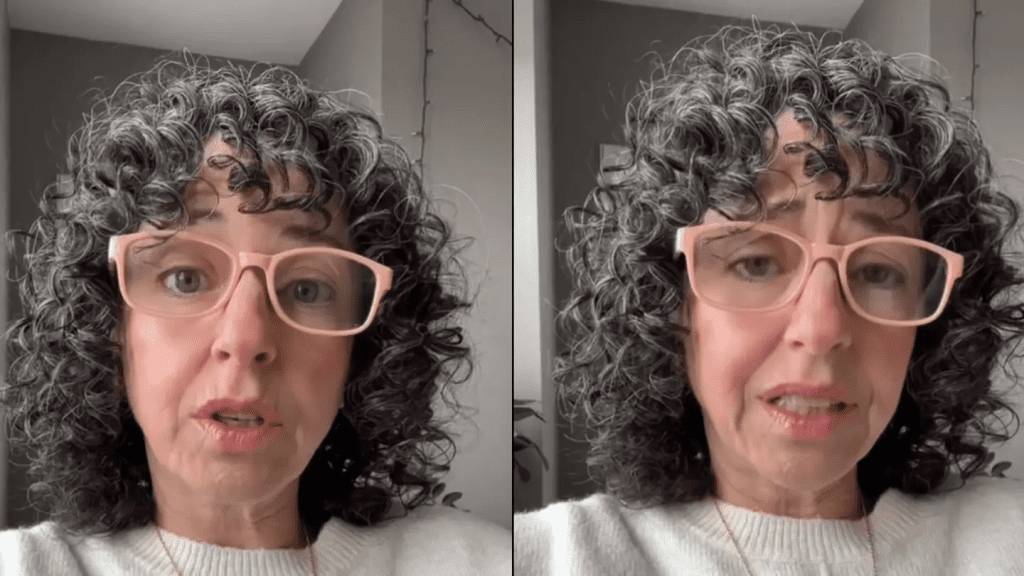Attention deficit hyperactivity disorder (ADHD) is commonly seen as a childhood condition. It’s typically associated with hyperactive kids who struggle to sit still or focus in class. But here’s the catch—ADHD doesn’t just vanish as you grow older. In fact, many adults, especially women, are diagnosed later in life, often after years of being misunderstood or misdiagnosed.
One such individual, Coach Jennifer Salzman, recently shared her late-in-life diagnosis story on social media. She highlighted three overlooked traits of ADHD that are helping adults worldwide recognize the signs they may have missed. Let’s explore these insights and shed light on the realities of adult ADHD.
Why ADHD Often Goes Undiagnosed in Adults

ADHD is a neurological condition that affects focus, attention, and impulse control. Traditionally, it’s categorized into two primary types: inattentive and hyperactive/impulsive. While it’s often diagnosed in childhood, many adults fly under the radar for decades. Why? Because the symptoms of adult ADHD frequently manifest differently than in children.
According to research published in JAMA Psychiatry, the prevalence of adult ADHD diagnoses has doubled in the last decade. This rise is partly due to growing awareness and a deeper understanding of how ADHD presents in adults. Behaviors once dismissed as personality quirks or generalized anxiety are now being identified as ADHD symptoms.
So, what are the traits adults (and even healthcare providers) are missing?
1. The “Interest-Based” Attention System
Contrary to stereotypes, ADHD isn’t about a lack of attention—it’s about inconsistent attention. Jennifer Salzman explains that adults with ADHD often operate on an “interest-based nervous system.” Instead of focusing on what’s deemed important, ADHD brains are wired to zero in on tasks or topics that captivate their curiosity or interest.
For example, someone with ADHD might hyper-focus on a creative project for hours but struggle to respond to a simple work email. Why? Their brain is activated by:
- Passion
- Novelty
- Urgency
- Challenge
ADHD individuals thrive when working on exciting or meaningful tasks but can procrastinate or avoid mundane responsibilities. Dr. William Dodson, an ADHD specialist, notes that this behavior isn’t laziness—it’s simply how the ADHD mind functions. Unfortunately, society often misinterprets this as poor time management or lack of motivation.
2. Emotional Hyper-Arousal
Another overlooked ADHD trait is emotional hyper-arousal, which refers to heightened emotional responses. For adults with ADHD, emotions don’t just come and go—they erupt and linger.
Have you ever been told you’re “too sensitive” or that you “overreact”? This is a common experience for people with ADHD. Their emotional highs are euphoric, while their lows can feel devastating. Here’s what it looks like:
- Rapid reactions to small triggers
- Intense feelings of frustration, excitement, or sadness
- Overwhelm that can spiral into emotional exhaustion
According to Dr. Dodson, adults with ADHD process emotions more passionately than others. Emotional hyper-arousal can lead to impulsive outbursts or internalized stress, making it difficult for others to understand the depth of what they’re feeling. It’s no wonder this trait is often mistaken for mood disorders like bipolar disorder.
3. Rejection Sensitivity Dysphoria (RSD)

Rejection Sensitivity Dysphoria (RSD) is perhaps one of the most painful aspects of ADHD. It refers to the intense emotional response triggered by perceived criticism, failure, or exclusion.
For adults with ADHD, rejection doesn’t just sting—it burns. Imagine your boss casually criticizing your work in a meeting. For most people, it’s a minor hiccup. But for someone with ADHD, it can feel like a personal attack, leading to overwhelming shame or sadness.
RSD can manifest in two ways:
- Outwardly: Anger or frustration directed at the source of rejection.
- Inwardly: Self-doubt, depression, or even avoidance of future opportunities to prevent criticism.
The emotional weight of RSD can strain relationships, erode confidence, and create cycles of anxiety. Unfortunately, many adults dismiss these reactions as “being too sensitive” without realizing they’re part of a broader ADHD profile.
Why These Traits Are So Often Missed

The three traits Salzman highlights—interest-based attention, emotional hyper-arousal, and RSD—are often overlooked because they don’t fit the stereotypical ADHD mold. When people think of ADHD, they picture restless children or obvious hyperactivity. But in adults, especially women, the symptoms can be internalized, leading to misdiagnoses like anxiety or depression.
Women, in particular, are more likely to mask their ADHD symptoms, overcompensating with perfectionism or excessive effort. As a result, their struggles often go unnoticed, both by healthcare providers and their loved ones.
Everyday Challenges of Adult ADHD
Beyond these overlooked traits, adults with ADHD may face daily struggles, such as:
- Disorganization: Losing keys, misplacing documents, or forgetting appointments.
- Time Management Issues: Constantly missing deadlines or struggling with procrastination.
- Stress Overload: Feeling overwhelmed by routine responsibilities.
- Impulsivity: Making hasty decisions without considering long-term consequences.
- Restlessness: Difficulty relaxing or enjoying downtime.
These challenges can affect every aspect of life, from careers to personal relationships. Recognizing these patterns is the first step to managing them effectively.
Lessons from Late ADHD Diagnoses

Jennifer Salzman’s story is a powerful reminder that it’s never too late to seek answers. While a late-in-life ADHD diagnosis can bring relief and validation, it’s often accompanied by bittersweet emotions. Many adults grapple with frustration over years of struggling without understanding why.
However, a diagnosis also opens the door to strategies and resources that can dramatically improve quality of life. Therapy, medication, and behavioral tools can help adults with ADHD navigate their unique challenges while leveraging their strengths.
Conclusion: Awareness Is the First Step to Empowerment
ADHD isn’t just a childhood condition—it’s a lifelong journey. The traits highlighted by Jennifer Salzman—interest-based focus, emotional hyper-arousal, and rejection sensitivity—are just the beginning of understanding adult ADHD. These insights shed light on why so many adults go undiagnosed and why awareness is critical.
If you suspect you might have ADHD or see these traits in someone you love, don’t ignore the signs. Seek a professional evaluation and explore your options. ADHD doesn’t define who you are, but understanding it can empower you to embrace your unique abilities and lead a fulfilling life.
Remember, it’s never too late to uncover the truth about yourself. Awareness and understanding can truly change everything.


